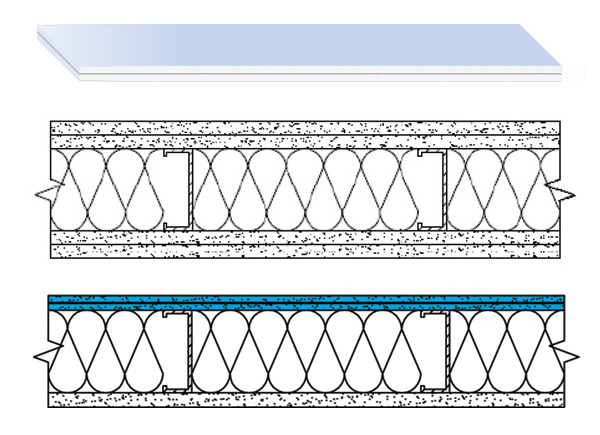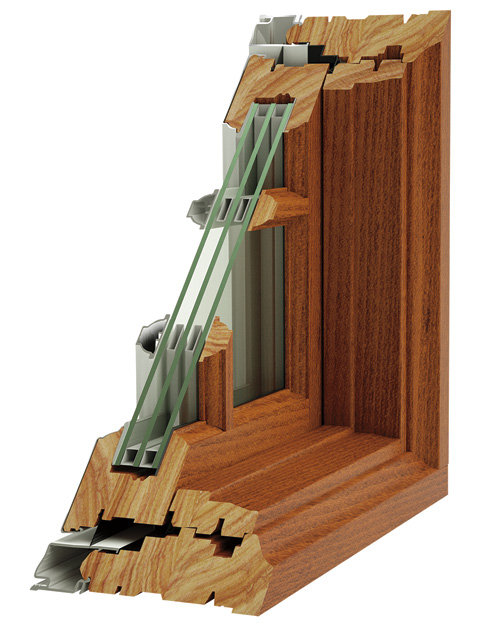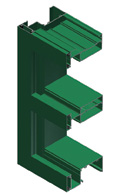Building Technologies Update for Multifamily Housing
Multifamily Acoustics
In a multifamily housing unit, good acoustics are important to ensure noise control between residential units or between indoors and outdoors. This has increasingly been recognized as a part of indoor environmental quality in green building standards but also as part of a general quality of life aspect associated with multifamily living. Occupants expect a reasonable sense of separation from neighbors that is necessary for comfort and privacy. Acoustically designed and installed walls and floor/ceiling assemblies can substantially decrease sound transmission through them and improve residents' satisfaction, which often leads to less turnover and fewer expenses associated with filling vacancies.
One of the common means of measuring sound transmission through walls is to test an assembly for its Sound Transmission Class (STC) rating. In simplest terms, it is a measure of how many decibels of sound are absorbed or reduced (i.e. sound attenuation) when sound passes through an assembly. The higher the STC rating, the more sound attenuation, meaning a quieter environment on the other side. There are many common design choices to achieve some degree of sound attenuation in framed interior walls that use gypsum board over studs with sound-absorbing insulation between the studs. The STC ratings typically improve as more attention is paid to details such as penetration offsets, sealants, and separation of studs from gypsum board using resilient channels. A fairly new option has also become available in the form of noise-reducing gypsum board which is specifically designed to reduce airborne sound transmission between two adjoining spaces when used in wall or floor/ceiling assemblies. This type of product features a viscoelastic polymer layer placed between two specifically formulated dense gypsum cores that collectively dampens sound energy. The result is a combination that significantly improves sound attenuation and is ideal for systems requiring high STC performance, such as multifamily housing.

Images courtesy of CertainTeed Gypsum
Noise-reducing gypsum board uses a polymer layer between two thin, dense, gypsum cores to achieve higher acoustical performance—so much so that a single layer can perform as well or better than a double layer of traditional gypsum board.
Noise-reducing gypsum board is an excellent acoustic solution for meeting STC ratings without the need for techniques such as isolation clips or resilient channels. Clips and resilient channel can easily be short-circuited during the construction process and even afterwards, during picture hanging or pressing of heavy objects against the wall, negatively affecting acoustic performance. These risks are eliminated when using noise-reducing gypsum board, thus providing more consistent acoustic performance. If used in systems with resilient channels, noise-reducing gypsum board can reduce the negative effect of short circuits. It can also help reduce material usage versus traditional multi-layer gypsum systems. The high acoustic performance of noise-reducing gypsum board makes it possible to build effective noise-reducing walls with a single layer of material, gaining valuable square footage from thinner walls, and saving both construction time and material cost. Less material used also means a more sustainable structure in keeping with green building practices.
Window Performance
Windows are an integral and important part of any multifamily wall system and as such, they need to address a variety of design criteria. The desire to provide views and natural light needs to be balanced with energy efficiency in the wall system. To achieve the best energy efficiency and overall performance, a window system should be selected based on the performance of the total unit, not just the components. An option to consider in low- to mid-rise buildings with larger window sizes is a wood-framed window rated to meet AAMA performance classification CW. This performance level assures that the window can withstand design pressures from wind of at least 30 pounds per square foot (psf) and in some cases on the order of 50 psf or higher. It also assures that the windows will seal and prevent drafts in most situations while holding up to wind and weather conditions on upper floors of buildings. Aluminum-clad wood windows are often used where design flexibility is desired, where the warmth of wood will complement other interior woodwork, where low-maintenance exteriors are important, or in older existing buildings that require an authentic look.


Images courtesy of Pella EFCO Commercial Solutions
High-performance, double-glazed, aluminum-clad wood windows were used to achieve energy performance in the Burlington Apartments in Portland, Oregon, designed by Ankrom Moisan Associated Architects. For even greater energy efficiency, triple-pane windows and doors are available as shown in the bottom image.
The glass options for windows have increased significantly in the past few decades but often choices can be limited by the window system used. For residential multifamily situations that prefer the aesthetic and energy performance of wood over other choices, the glazing choices do not necessarily need to be limited. It is now possible to specify and select up to triple glazing for wood-framed windows for greater energy efficiency and sound control. Further, the insulating glass units can be treated for greater heat or solar gain resistance and the insulating space filled with inert gas such as krypton. Altogether, a triple-glazed, krypton-filled, wood-framed window can deliver thermal performance values on the order of a U-factor as low as 0.16 or an R-value of approximately R-6.25.
Notice

www.certainteed.com/gypsum

www.efcocorp.com

www.echelonmasonry.com

www.tamlynwrap.com









